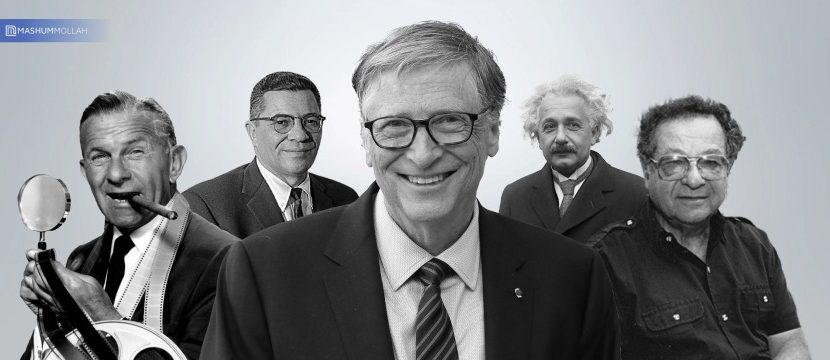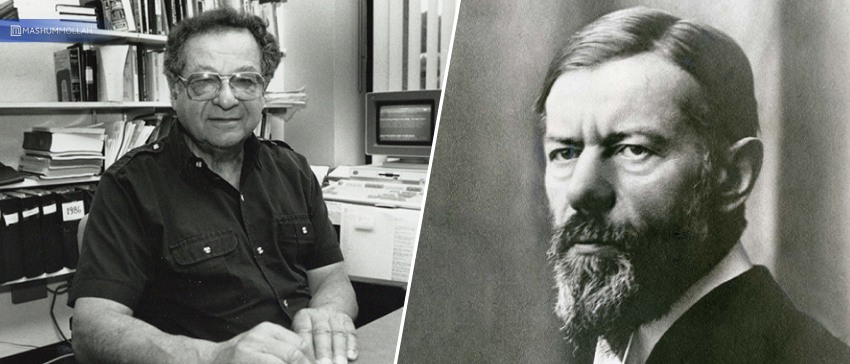Leadership, Leadership Style
What Is Transactional Leadership Style? How Does It Shape A Leader And An Industry?

“The first rule of any technology used in a business is that automation applied to an efficient operation will magnify the efficiency. The second is that automation applied to an inefficient operation will magnify the inefficiency.”
Bill Gates
Understanding the difference between several leadership styles is essential elemental, and critical. The size, industry, type, and other key denominations affect an entrepreneur’s leadership style choice.
The transactional leadership style focuses mainly on supervision, organization, and performance. Most transactional leaders focus on tasks related to performance and goals. A system of reward and punishment is there – which motivates the followers but only for a limited period.
Transactional leadership of managerial leadership is a style that gets an industry through an emergency. However, it is not so reassuring regarding the leading industry in the long term.
Understanding What Is Transactional Leadership Style?

The transactional leadership style aims to fulfill a short-term plan and uses a reward and punishment framework to fulfill its goals. A transactional leadership style also follows the role of organization, supervision, and group performance. The key objective of such a leadership style is to motivate the workers through a reward and performance base.
A managerial leader takes a behavioral approach and is often driven by some key assumptions like –
- A clear and well-defined chain of command makes the employee perform better.
- The system of reward and punishment motivates the workers.
- The primary objective of the workers is to obey the commands and instructions of the leaders.
- Subordinates should be under constant supervision and need to be organized to ensure that the goals and expectations of the organization are met.
Much like the bureaucratic leadership style, abiding by the rules and the hierarchy of the organization is important to this type of leadership.
The transactional leadership style differs from the transformational leadership style in its quest to maintain the status quo. On the other hand, transformational leaders are more forward-thinking and willing to share their vision with their subordinates and employees.
Background/History Of Transactional Leadership Style

Similar to some of the other leadership styles I discussed, Transactional leadership was also propagated by the famous 20th-century German sociologist Max Weber. Weber originally referred to this leadership style as rational-legal leadership. This style of industry management was used vastly after World War II. the idea first appeared in Weber’s “The Theory of Social and Economic Organization.”
In his 1978 book Leadership, James MacGregor Burns, a historian, and scientist, elaborated upon the different elements of Transactional leadership. He also explained how Charismatic leadership style. According to him, these two styles of leadership are mutually exclusive.
The research of Weber on Transactional leadership was further advanced by Burns, Jane Howell, Bernard M. Bass, and Bruce Avolio. They defined three key dimensions of this style:
- Contingent Rewards: Transactional leaders focus on creating a link between goals and rewards.
- Active Management By Exception: Transactional leaders actively supervise their teams and anticipate problems. They also take corrective measures as soon as possible.
- Passive Management By Exception: Transactional leaders follow a passive style of management. They usually stay away from the team’s way and process. But when the standards are compromised, they won’t take a minute to intervene.
Such leadership style was prevalent during and after World War II. But, this leadership style is only visible in the military and in large businesses where rules and regulations reign supreme.
Characteristics Of Transactional Leadership Style
The key assumptions of the transactional leaders and the three dimensions defined by the researchers shape the characteristics of the transactional leadership style. Here is a straightforward explanation of the transactional leadership characteristics.
1. Based On Extrinsic Motivation

A transactional style of leadership works by offering external motivation. Workers under this leadership are not motivated by any internal force. Workers under such leadership are motivated by tangible and extrinsic rewards.
2. Blanched Status Quo Through Reward & Punishment

Managerial leader aims to achieve their predefined goals by motivating their subordinates to aim to run for rewards. The employees are also motivated by the fear of punishment, and they ensure to reach the goal by any means since they also want to avoid punishment.
3. Follow Clearly Defined Goals

A managerial leader sets expectations and standards with the aim of maximizing efficiency and productivity among the workers within the industry. There are predefined goals and objectives, and the employees have to work on them with the motivation to achieve rewards or be driven by the fear of punishment.
4. Employees Are Monitored And Managed

The transactional leadership style is based upon a few key assumptions, which I have explained before. As per that assumption, a managerial leader always wants to keep his team of employees under constant observation. This constant supervision of the organization should be deemed as a way to improve the efficiency of the employees.
Transactional Leadership Style What’s Good…And What’s Not So Good?
Putting the employees under constant monitoring and motivating them to work by promising reward works to a certain extent. It is a good way to manage an organization when the goals are predefined and require a short period to be fulfilled. But there are also some drawbacks to running an organization using transactional leadership. Let us explore these aspects.
The Advantages Of Transactional Leadership Style: Pros
- This leadership style is good for achieving the short-term goals of a business.
- There are established procedures and predefined goals that this leadership style follows. The rules and goals are the driving force to providing consistent results.
- There is a chain of command with clear expectations from each organization member. This makes the detection of problems and troubleshooting them a lot easier.
- Work environments that perform many repetitive tasks can benefit from this leadership style and maintain a stable environment.
The Disadvantages Of Transactional Leadership Style: Cons
- There is little possibility of change since transactional leadership focuses on the status quo, not the reformation or change. There is also a lack of innovation.
- The employees do not get encouraged to initiate to do anything innovative. So, such a model is highly demotivating.
- Employees may get caught in the process of repetitive and similar approaches to doing anything, and the working process will get rigid in the process.
- Incrementalism is another flaw of transactional leadership. Employees under such a leadership style focus on the reward and the increments. They don’t have any long-term or broader aspects or goals compared to employees under more visionary competitor companies.
Know More: Larry Page Biography
Transactional Leadership Style: Case Studies (Examples)
It would be absurd if I kept this article incomplete without providing examples of transactional leadership style. Here are two case studies of the transactional leadership style. You will find them fascinating.
Bill Gates
Bill Gates and his friend Paul Allen created Microsoft. Gates created the world’s biggest software company with Allen. They started the company in 1975, and it had grossed $2.5 million when Gates was 23. The birth of Windows and the growth of Microsoft is a known story to everyone.

However, behind all of that, Bill Gates used his transactional leadership style to boost the growth of his company. As a transactional leader, Gates used to visit and monitor the different teams in his company. He queried them and monitored them to evaluate if the teams were in the right place. Gates can also be exemplified as an example of a Charismatic leader.
Vince Lombardi
The coach of the Green Bay Packers, Vince Lombardi, is a good example of a transactional leader. In 1959 Vince signed a five-year contract with Green Bay. The team never had to face a losing session after Vince became the captain of the team.

Even the name of the super bowl team takes after him. He used to follow the rules and trained the team in a way where everyone was aware of their tasks and worked to their optimum efficiency.
How To Become A Transactional Leader?
Judging the benefits of this leadership style, you might be interested in developing yourself as a transactional leader. Of course, you can read the different theories and studies by Max Weber himself. However, I have listed some aspects that you can focus on –
1. Focus On Short Term Goals

Transactional leaders focus on short-term goals, and they want to achieve them by promising rewards to the employees. Also, punishment is also assured if the organization is not met. So, you have to also follow that if you were to become a transactional leader.
2. Structured Policies And Procedures

Such leaders abide by some structures, procedures, and policies to simplify the process of working within the organization. Their aim through this initiative is to achieve maximum efficiency from the team of workers.
3. Strict Monitoring And Control

As explained in the characteristics, transactional leaders must be very strict about monitoring the employees. According to this aspect, supervision is also helpful for boosting the team’s efficiency.
4. Focused On Performance

A transactional leader must focus on the team’s performance through constant monitoring. The team has to meet the goals and the expectations set by the leaders, and the leaders can ensure that by focusing on the group’s performance.
Frequently Asked Questions (FAQs):
Assumably all of your queries have already been answered. Here are some popular questions and answers related to this type of leadership. You will find them informative and educational.
Transactional leaders are most effective in organizations where the managers can closely monitor the groups of employees and their progress. Then, when a company requires to meet a target, it can set a reward and punishment framework under such leadership and meet the status quo.
The true purpose of transactional leadership is to derive the maximum results by monitoring team performance, enforcing rules, rewarding success, and punishing failure. These are some of the key aspects of this type of leadership style.
Many transactional leaders have increased in business and other walks of life. For example, some names include Bill Gates, Vince Lombardi, Norman Schwarzkopf, and Howard Schultz.
The famous German sociologist Max Weber introduced the idea of Transactional leadership. Later, other experts like James MacGregor Burns, Bernard M. Bass, and Jane Howell further elaborated on the idea.
Final Words
When building a leadership skill, knowing how different leadership styles work is important. The transactional leadership style is not bad but insufficient to some extent. There are some benefits. Similarly, the drawbacks of the same weigh it down to some extent.
We are not in the time of World War anymore. However, it can be recognized to achieve the short-term goals of an organization. Therefore, you should always welcome the merits of this leadership style. I think that this article was helpful. You can ask questions in the comment if you have any further queries.
Read Also: